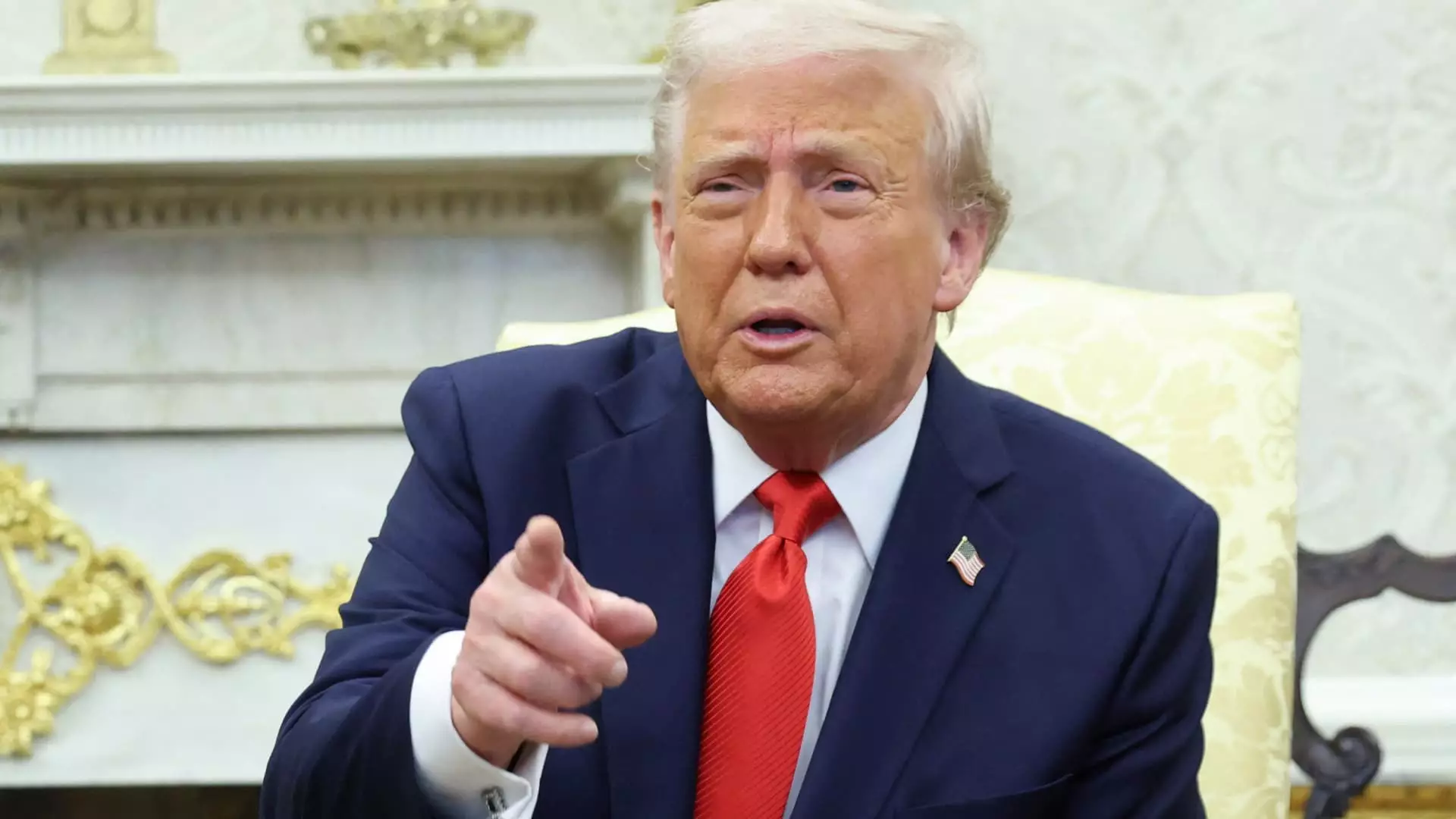The recent surge in automotive stocks due to President Trump’s assurances of support for U.S. car manufacturers raises more questions than it answers. While it might seem beneficial at first glance, these fleeting promises lack substantial backing and risk creating an illusion of security within the industry. Stock fluctuations based solely on presidential comments highlight a precarious market reliance on fluctuating political narratives rather than tangible strategic policies. The automotive sector deserves more than just talk; it needs actionable plans and concrete investments in innovation, production infrastructure, and workforce development.
Tariffs: An Obstacle to Recovery
A significant part of the automotive puzzle is, ironically, the tariffs that Trump has placed on imported vehicles. With a hefty 25% tariff implemented on April 3, car companies that rely on parts produced abroad find themselves in jeopardy. While the President assures aid, the existing punitive measures create a risky balancing act that often jeopardizes profitability and consumer prices. If Trump truly aims to assist these companies, repealing or modifying these tariffs would send a clearer signal of support than vague assurances. The ongoing tariffs present a double-edged sword—while they encourage domestic manufacturing, they also inflate prices and stifle growth in a globally interconnected market that thrives on cooperative trade relationships.
The Mixed Response from Automakers
Different automakers have responded to the tariffs and the President’s comments in divergent ways, revealing an industry divided on how to move forward. While companies like Ford and Stellantis have tried to spark consumer interest with employee pricing deals, others, such as Jaguar Land Rover, have resorted to halting U.S. shipments altogether. This inconsistency demonstrates a lack of unified strategy and direction across the industry. If there’s disarray at the leadership level, it becomes increasingly difficult to promote any form of solidarity or growth plan. While temporary fixes can provide immediate relief to some, they do little to sow the seeds for sustainable progress.
The Role of Innovation Over Protectionism
Innovation should serve as the centerpiece for revitalizing the automotive sector rather than leaning heavily on tariffs and temporary aid. Electing to embrace electric vehicles and autonomous technology will not only bolster the American economy but also align with a global trend toward sustainability. Companies that prioritize research and development will find themselves better positioned to adapt to market changes than those hastily seeking refuge in governmental protectionism. The reluctance to shift focus from an outdated manufacturing paradigm to a disruptive technological advance could hinder the long-term viability of these companies.
Consumer Perspective: The Hidden Costs
Lastly, it is important to consider the consumer perspective amid these developments. While automotive stocks temporarily soar based on presidential comments, the reality is that rising tariffs and unclear market strategies often translate into higher prices for consumers. A mere 1% to 4% boost in stock prices may render an insignificant impact when the average consumer is considering future vehicle purchases. This perceived aid to automakers ultimately comes at the expense of consumer wallet and choice. A true victory for the automotive industry would entail not just stock market gains, but also accessible, affordable vehicles that cater to the needs of American families.
In closing, benevolent rhetoric without substantive action produces an unhealthy cycle in which optimism is often at odds with reality. The automotive sector needs genuine support, not superficial promises, to drive sustainable growth.

